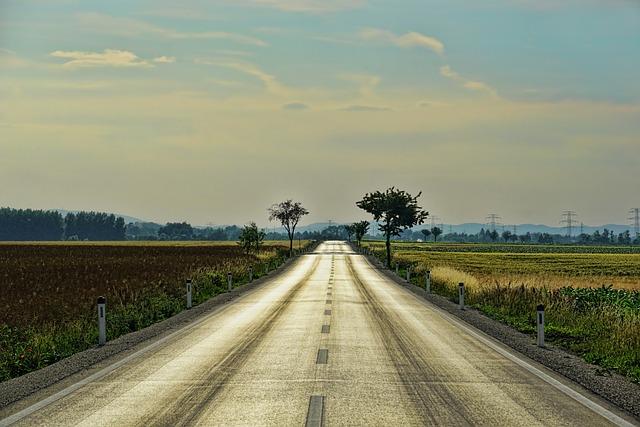When it comes too experiencing the rich heritage of a culture, few things tell the story quite like customary clothing and textiles. From intricate embroidery to vibrant patterns and time-honored weaving techniques, these fabrics offer a window into the history, values, and artistry of communities around the world. Weather you’re a curious traveler, a textile enthusiast, or simply someone who appreciates cultural expression, exploring destinations known for their traditional attire can be an inspiring journey. In this article,we’ll take you to some of the top places where you can immerse yourself in the beauty and craftsmanship of traditional clothing and textiles,uncovering the stories woven into every thread.
Table of Contents
- Exploring the Cultural Significance of Traditional Clothing Around the World
- Regions renowned for Their Unique Textile techniques and Patterns
- Where to Experience Authentic Handwoven Fabrics and Traditional Garments
- Tips for Visiting Local Markets and Artisans to Discover Textile Heritage
- Insights and Conclusions
Exploring the Cultural Significance of Traditional Clothing Around the World
Traditional clothing serves as a vibrant tapestry weaving together identity, history, and artistry. Across continents, the fabrics and patterns tell stories of ancestral heritage, climate adaptation, and spiritual beliefs. For example,the intricate kimono of Japan goes beyond fashion—its motifs frequently enough symbolize seasons or well-wishes,making it a wearable form of cultural storytelling. Meanwhile, West African textiles like the Kente cloth are not only dazzling but also imbued with symbolism relevant to social status and community values, transforming clothing into an emblem of pride and unity.
Exploring these garments offers a deeper appreciation of the diversity and sophistication embedded in traditional attire. When visiting places rich in textile traditions, you may find yourself captivated by the craftspeople who maintain centuries-old techniques—whether it’s hand-dyeing Indonesian batik, embroidery in India’s Rajasthan, or the weaving of Peruvian alpaca wool.These destinations offer immersive experiences,such as workshops or market explorations,where you can engage with the artisans and understand the significance behind every stitch and color choice.
- Symbolism & Identity: how clothing signifies social roles and heritage.
- Artisanal Techniques: Traditional methods passed down through generations.
- Community & Celebration: garments as central to festivals and rites of passage.
Regions Renowned for Their Unique Textile Techniques and Patterns
Across the globe, several regions have cultivated textile traditions that are as distinctive as the cultures they represent. In the highlands of Peru, for instance, intricate alpaca wool weavings showcase psychedelic patterns and vibrant hues, reflecting centuries-old Incan artistry. Simultaneously occurring, in the coastal villages of India, block printing with natural dyes breathes life into fabrics, where each motif tells a story rooted in local folklore and spirituality. These techniques are not just methods of fabric creation; they are living narratives preserved in every thread, often passed down through generations of skilled artisans who guard the secrets of their craft.
Similarly, certain regions have become synonymous with particular textile aesthetics, drawing travelers eager to witness these cultural masterpieces firsthand. Consider:
- Japan’s Okinawa with its elegant bingata dyeing process, producing floral and ocean-inspired patterns.
- Morocco’s Atlas Mountains, where bold Berber weavings employ symbolic geometric designs and rich earth tones.
- northern Thailand, renowned for its delicate hand-embroidered hill tribe fabrics, each piece a vibrant patchwork of history and nature.
Exploring these regions invites a deeper appreciation of how textiles serve as both functional items and profound cultural expressions.
Where to experience Authentic Handwoven Fabrics and Traditional Garments
For those eager to immerse themselves in the world of handwoven textiles, certain destinations stand out for their vibrant weaving communities and rich heritage. In India, the region of Varanasi captivates visitors with its exquisite Banarasi silk saris, where each garment is a masterpiece woven with intricate gold and silver threads. Moving to Southeast Asia, Laos offers a cultural tapestry woven into every thread of its traditional sinh skirts, handcrafted using techniques passed down through generations.Meanwhile, countries like Peru proudly showcase the artistry of Andean weavers, where bold patterns and natural dyes celebrate centuries of indigenous tradition.
Beyond these hotspots, the journey into authentic fabrics frequently enough leads to smaller villages where traditional methods remain alive. Here, travelers can witness women skillfully working on backstrap looms or participate in workshops that reveal the painstaking process behind every stitch. For an immersive experience, explore:
- Otavalo Market, Ecuador – A vibrant hub for colorful, handwoven textiles from indigenous artisans.
- kutch Region, India – Famous for its intricate embroidery and weaving by nomadic tribes.
- Chiang Mai, Thailand – Where you can discover traditional hill tribe fabrics and participate in weaving demonstrations.
Tips for Visiting Local markets and Artisans to Discover Textile Heritage
When exploring local markets and artisan workshops, immerse yourself fully in the storytelling that accompanies each textile creation. Engage with the artisans by asking about the traditional techniques, cultural significance, and the inspirations behind their work. This personal interaction often unlocks layers of history woven into the fabric,making your experience much richer. Remember to keep an open mind to varied textures, colors, and patterns—each region has its own distinctive palette and methods that reflect centuries-old practices.
To make the most of your visit, consider these practical tips:
- Visit during off-peak hours to enjoy a more relaxed atmosphere and have in-depth conversations with the makers.
- Bring cash, as smaller vendors might not accept cards or digital payments.
- Take photos respectfully, and always ask permission before capturing the artisans at work or their creations.
- Support sustainably by choosing pieces that use natural dyes and ethically sourced materials.
Insights and Conclusions
Exploring traditional clothing and textiles offers a unique window into the rich cultural heritage and artistic craftsmanship of communities around the world. Whether wandering through vibrant markets, visiting local artisans, or attending cultural festivals, these destinations provide unforgettable experiences that celebrate history, identity, and creativity. As you plan your next journey, consider immersing yourself in these living traditions—each stitch and pattern tells a story waiting to be discovered. Happy travels!

